In the “Prospero” edition for June 2020, John P Gulliver askes ‘why scanner’ as the name for an OB television control room?
For an earlier discussion of this, please see Why MCRs are called Scanners/
Dave Buckley
Any OB staff on this discussion group who receive “Prospero”, should have a look at page four where a John P Gulliver asks “why ‘scanner’ as the name for an OB television control room?”I’ve had a look in TELETALK, a Dictionary of Broadcasting Terms, published in 1991 by my old TV department – TV Training, and the entry just says “…general term for mobile control rooms in an outside broadcast…”.
Pat Heigham
I favour the derivation from the Intermediate Film system for early outside broadcasts. As the equipment in the van ‘scanned’ the film just after processing, so the name transferred to all-electronic vehicles.https://en.wikipedia.org/wiki/Intermediate_film_system
Roger Bunce
I always understood that the original O.B. trucks were modified from wartime mobile radar units – known as ‘Scanners’ because they originally had big scanning aerials on the roof.Alan Taylor
This topic came up a number of years ago on UK Broadcast newsgroup.Like many others, I had always believed that the term scanner was carried over from wartime radar vehicles and I was told that by senior OB staff in the 1960s. For decades I never suspected that there could have been any other explanation, however I’m not at all convinced by it these days.
At that time, the guy living over the road from me was a radar engineer from the pioneering days of radar at Worth Matravers. I asked him about it and he was adamant that the term scanner was rarely used and if it was, it related solely to a rotating dish. The vehicles were referred to as mobile field stations.
I still wasn’t totally convinced, so I did a search on the BBC People’s War site, where people wrote about their WW2 memories. I suspected that there must have been somebody who did something like stepped out of a scanner to have a pee just as a bomb hit it and would explain that if they had stayed in the scanner, they would have been blown to pieces. I couldn’t find any mention of scanner in that context in the whole of that site, or anywhere else on the internet using the word scanner in connection with WW2 radar vehicles.
The convincing snippet of information as far as I was concerned came from a BBC Annual, published in or just before 1939. There was a picture of a BBC MCR and the caption referred to it as the Scanning Vehicle. If I remember correctly, that reference was dug up by one of the KA Comms engineers who attached a copy of that page.
Although the radar explanations seems very plausible and many early video engineers worked on radar systems in the war, the lack of any references to scanners in that context does seem odd if it was truly the general term used for those vehicles, especially as there must have been large numbers of them. The picture in the BBC Annual does seem to be much more plausible and of course predates the invention of radar, so that’s the explanation which I believe ….. unless anybody can come up with a more plausible explanation and back it up with evidence from that time.
Peter Hider
Does the term scanner come from the experimental Baird system days when the pictures from an OB had to be scanned by a Nipkow disc in order for it to be copied onto film for instantaneous processing and was the film processing done at the OB site or back at AP? Apparently the scanning of the picture at one time took place under water during the processing although air bubbles reduced the picture quality.This processing van would logically be called the scanner. The system was used for the experimental Derby outside broadcast in 1930 and the pictures sent to places like Stockholm and Paris which is remarkable when you realise that the next overseas OB was Richard Dimbleby’s from Calais in August 1950.
Are any of our retired BBC engineers still around who operated the Baird system?
I haven’t yet looked but there may be be a mention of a Scanner in the Baird archives.
Alan Taylor
I’m not aware of any MCRs being around prior to the days of “high definition” 405 line television and doubt that intermediate film processing was ever practical to do on location. Therefore I’m still mystified why the term ‘scanning vehicle‘ was ever used. Obviously the technology was based on scanning a pick up tube and a CRT, but that doesn’t seem a good enough reason to explain naming the truck after it.I’m hoping that somebody can post that old picture once again. I can’t find it online anywhere and didn’t take a copy at the time.
I would think it’s unlikely that there is anybody still alive who operated the Baird system. Even if they were quite young at that time, they would presumably now be at least 110. Our best hope is to find documents from the time, probably via television history enthusiasts, but as the word ‘scanner’ was informal jargon, it may not appear in official records.
Alec Bray
At least one picture of the Baird scanner is on the Tech Ops page Why MCRs are called Scanners/ and in fact came from PROSPERO!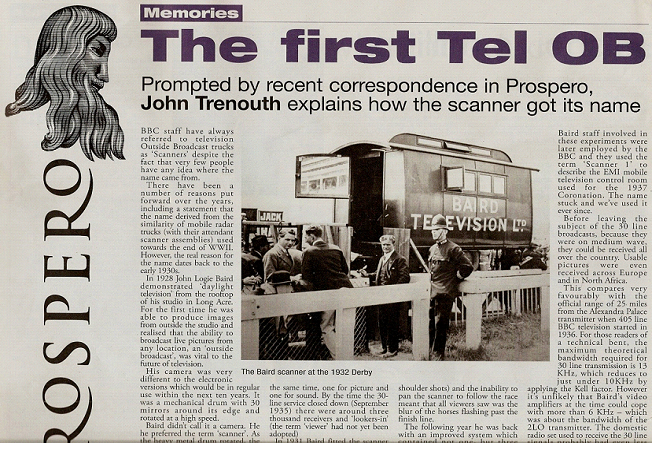
Look at the bottom paragraph in the first column:
"Baird didn’t call it a camera. He preferred the word ‘scanner’. (perhaps someone could look at the “Prospero” archives and get the full article.)
The entry was offered by Tony Crake, who further reported: “… Prospero actually did a back page story some months back on the scanner !..”
Intermediate film processing was done on site – there was a delay of perhaps 30 seconds between the event and its transmission.
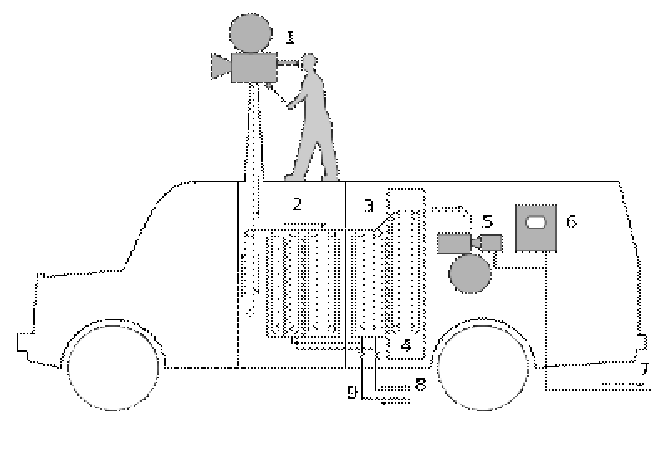
This looks more like a scanner of the time. This is in fact the German equivalent – it used an electronic type imaging system rather than the Baird Nipkow disk.
"… An ordinary movie camera was mounted on a truck and took a conventional photographic film and sound recording of whatever was to be transmitted. The exposed, but unprocessed, film went immediately down a light-tight tube into a development tank (E), on into a fixing tank (F), through a washing tank (W) and a preliminary drying process (Vortrocknung), then past an "indoor" television camera which copied the image (Bildabtastung) and a sensor to copy the sound track (Tonabtastung). The film was then given additional drying (Nachtrocknung) and wound on to a take-up spool. Electronic equipment transmitted the image and sound signals within sixty seconds of the filming…"
http://people.ischool.berkeley.edu/~buckland/television.html
Chris Woolf
And Bildabtastung translates as "scanner"…It isn’t obvious what version of scanner it was from that drawing. Flying spot is most likely, with the cylinder on the left being a photomultiplier. It could be an axial camera tube, which had been invented by then, but I’m not sure Fernseh had access to them at that date.
Alan Taylor
I see your sketch and raise you an actual photograph. Popular Science, Nov 1934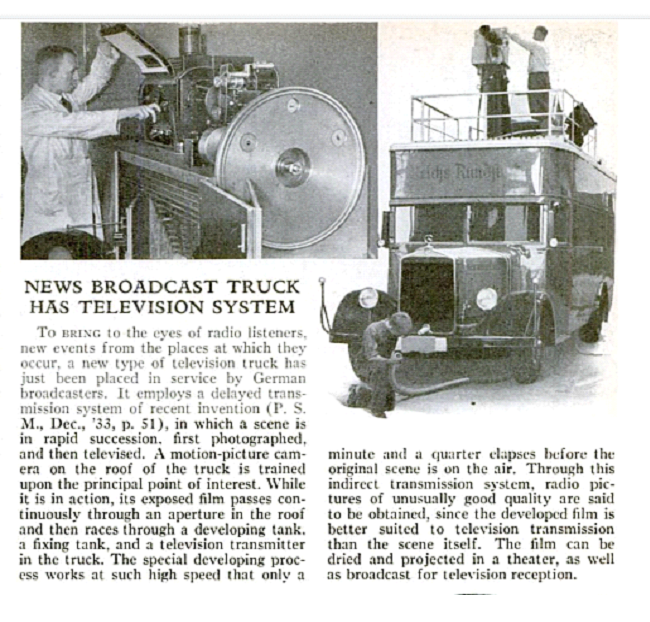
I’d love to see again the picture I previously described from a 1930s BBC annual. I don’t recall seeing a camera on the roof, but it was a long time ago when I saw it.
The Wiki article seems to be jumbling two elements. One is that the Germans built an intermediate film truck and the other is that they and the BBC both used intermediate film technology indoors.
Pat Heigham
The Wiki article does mention a flying spot scanner – do you think that the German version managed to install a Mechau?Fearsome beast, I think LG TK were equipped with those.
Alec Bray
Alan Taylor wrote: “..is there any evidence that the BBC ever used the technology in a vehicle?..”I stick! The question has changed from "why is an MCR called a scanner" to "did the BBC use an intermediate film OB truck?"
The answer to the last question is – I am fairly certain – no. The Beeb did not have intermediate film OB units. The original OBs were from the Baird system, which did.
Now, if you look on the Interweb, you get a real problem with dates and events. One source says that the first BBC rigged OB was on Armistice Day 11th November 1937, when the King laid a wreath at the Cenotaph. Cameras were installed on the roof of neighbouring buildings. I do not trust this site, as some parts seem patently wrong – it implies for example that Image Orthicons were only used in the states…
However, the BBC website has this: on Coronation Day 12th May 1937, "… the BBC’s only outside broadcast unit, or ‘scanner’ as it was then called, delivered by EMI just days before, its complement of three cameras were positioned at Hyde Park Corner: a vantage point from which it was possible to view the Coronation procession coming from Marble Arch and then continue down Constitution Hill to Buckingham Palace…."
Now, how interesting “… the BBC’s only outside broadcast unit, or ‘scanner’ as it was then called…” It would seem to have been called a "scanner" from the off!
Re the flying spot in the German intermediate film truck. The Mechaus in Lime Grove were large machines, and the film spools were horizontal (and, I guess, the full film path was horizontal. In this picture, the feed spool (?) has its cover raised: I only ever saw them with the covers in place.
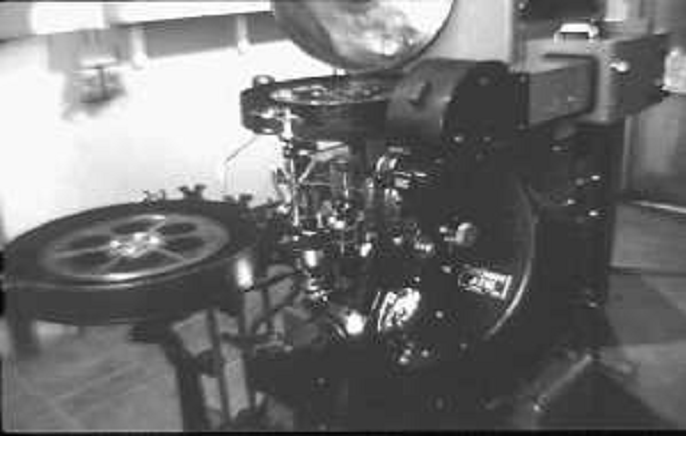
By contrast, what I take to be the light source and film transport in the German Intermediate film truck looks to have a standard vertical film path (which is what would be expected with the film path through the processing).
The flying spot would likely to have been generated by a system of mirrors.
Mike Jordan
I have these from Howard Arnell (Ex KA training etc)I also have a couple of Wimbledon and The Derby in 1938 and few studio shots shown to be of Baird spotlight and Baird Intermediate Film in 1936/1937
He certainly showed them as 1936/1937.
Cenotaph 11th November 1937:
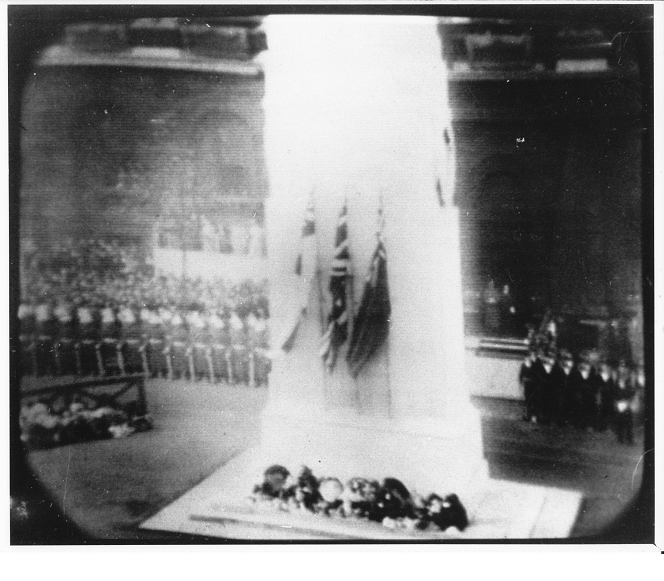
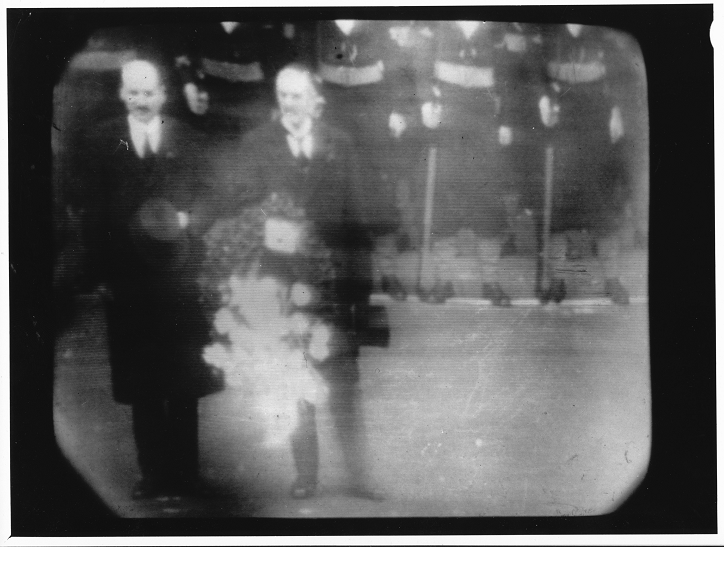
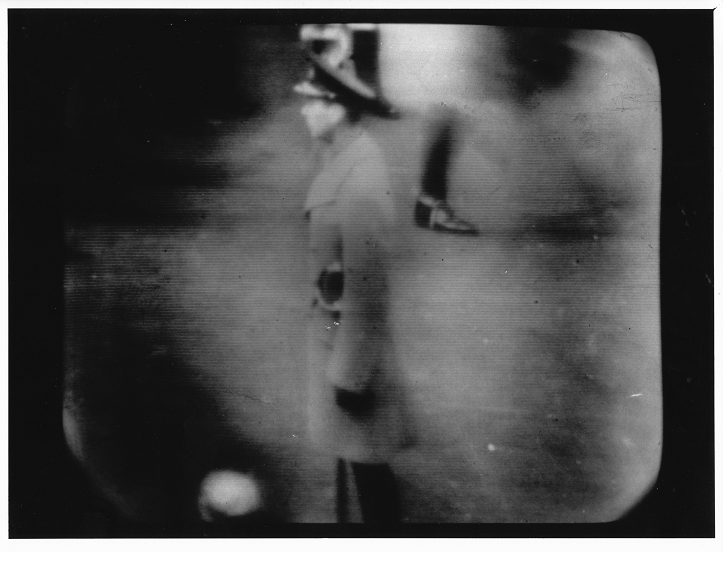
Tony Nuttall
When on TO28 I asked the origins of the Vehicle’s Name known as a Scanner. I was told that it derived from the action of an Electron Beam Scanning the camera Tube used in TV.An interesting Film compilation by film-maker Michael Kloft shows the Intermediate Film TV from the German Post Office for the 1936 Olympic Games.
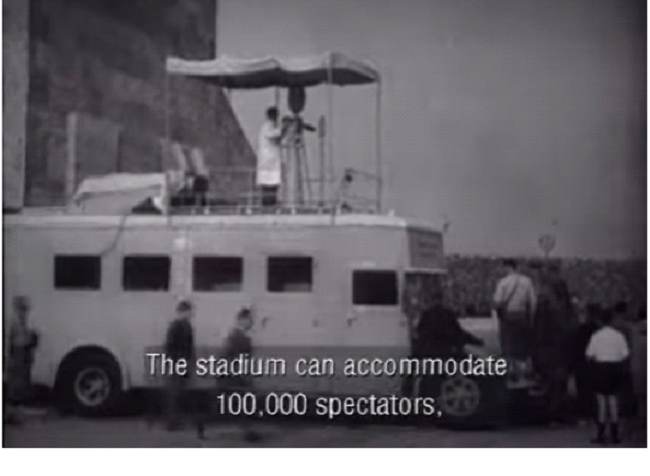
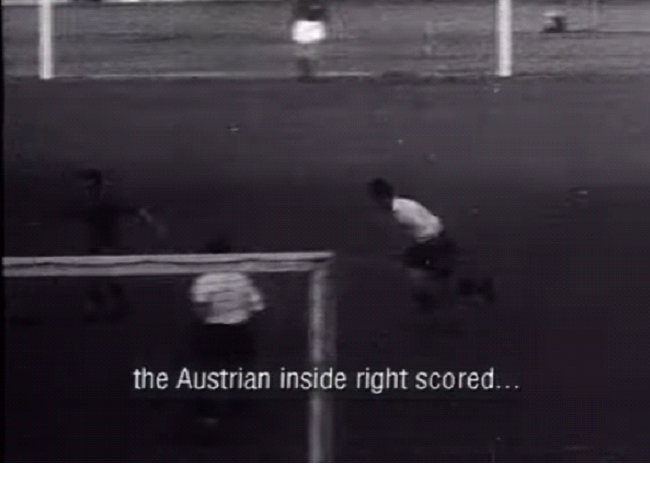
One of the final items shows German Soldiers with only one leg being trained how to get mobile again and return to their units. Very Monty Python!
German Soldiers
One of my favourite Scanners shots showing a young Mac, Don McKay, at the Funeral of George V1 adjusting a Parab. MCR8.
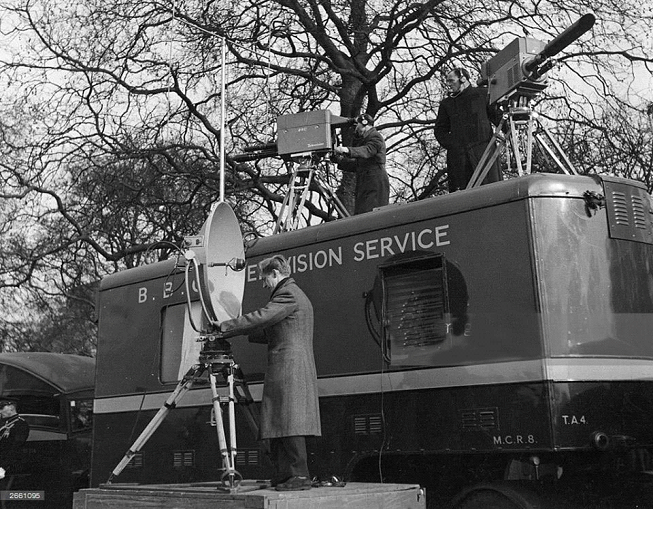
Brian Summers
I think it goes back even earlier that the 1936 equipment and goes back to what might have been the very first OB van!This bit of text comes from the MCR21 site, http://mcr21.org.uk/historical-context/ and speaks of the scanner. In this early time there was much discussion about “scanning” as it was the main difficulty in television. One clever feature of this Baird van is the mirror on the door, as the scanner was fixed in the van the mirror was used to follow the race.
“…In 1931 Baird fitted the scanner inside an old caravan and parked it in the street outside to continue his experiments. Seeing the horses going up and down Long Acre on their way to Covent Garden market gave him the idea to try to televise the Derby.
The scanner was arranged to look through a large mirror mounted on the inside of the caravan door, as the door was swung open, the scanner panned across the scene.
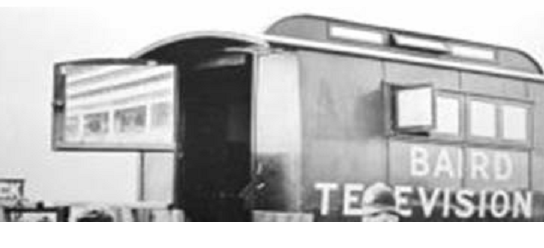
So it was now possible to follow the action at the end of the race and was, for its day, a great success.
Of course by now, everyone started referring to the whole caravan as the “scanner” – especially as the caravan door was a vital part of the apparatus.
A number of the Baird staff involved in these experiments were later employed by the BBC and they used the term “Scanner 1” to describe the EMI mobile television control room used for the 1937 Coronation. The name stuck with the BBC and they’ve used it ever since. …”
Geoff Hawkes
Brian’s explanation sounds the most likely and propitious. Can we settle on that and move on, or should we put it to a vote?Simon Vaughan
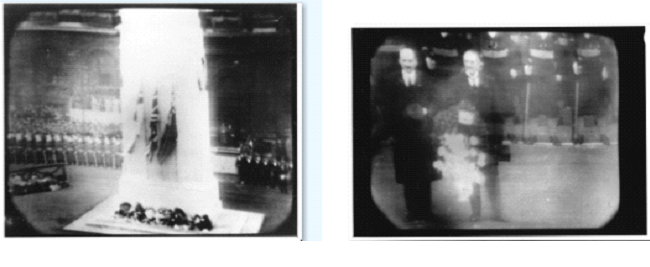
The Baird transmissions from Epsom for The Derby in the early 1930s were by a 30-line mirror-drum scanner, housed in a caravan and not by IFT. By default, the caravan was referred to as the scanner, whereas the actual scanner was housed inside.
Baird’s never developed the IFT as a remote scanner. It was hard enough keeping the equipment running reliably on the solid floor of Studio B, let alone a mobile unit! There were no outside broadcasts from Alexandra Palace using the Baird 240-line system. Baird’s laboratories were based at the Crystal Palace (until the fire of December 1936). Transmissions were conducted using the IFT, Spotlight and Emitron systems. Outside Broadcasts were conducted there – if you class pointing the IFT camera out the window in the side of the control room, looking out on to an outside performance area! IFT in this country didn’t venture beyond the studio/control room walls.
Although Baird employees worked tirelessly on the IFT it never worked as well as the German Fernseh operation. The Baird company were pinning all their hopes on their Electron camera (an adaptation to 240-lines of Philo Farnsworth’s Image Dissector tube which was under license to Baird’s). However, this provided little competition to the Emitrons in Studio A.
Whereas the Emitrons could operate on 1,000ft cables, the Baird Electron camera could only operate to a maximum of 20ft from its control equipment. So trying to cover a performance by using the Electron camera was severely limited – it wasn’t much of an improvement over the Spotlight system – although at least with the Electron the studio was lit! And extremely so – the Electron was severely insensitive and required twice as much light as the standard Emitron.
Pat Heigham
Thank you, Simon, for your input on this ‘vexing’ question!If anybody should be able to throw a bright light on this, it would be you and the Alexandra Palace Television Society.
Chris Woolf
Good confirmation of history – thank you.And no surprise that the German engineers made a better fist of a mobile IFT system. I believe that Baird’s failure to make his TV system(s) work was really because he wasn’t much of an inventor. Like Edison and Dyson he was an entrepreneur and salesman, who borrowed other people’s ideas and repackaged them. When confronted with the technical details, such as designing circuits that could send wideband signals down a long camera cable, he just didn’t have the fundamental engineering skill and ingenuity that Alan Blumlein (who led the EMI group) had.
In so many instances – Tesla is another that comes to mind – it is usually the showmen who get the money and fame, but the true inventors struggle to even be remembered.
Alasdair Lawrance
That does seem fairly confirmatory.I wasn’t aware that there was a mirror on the inside of the caravan door in the Baird system, as shown in the photo.
Norman Green
(Norman Green Ex EMI, IBA Chief Engineer and TV engineering historian.: Information forwarded by Neil Dormand.)
I believe the word ‘scanner’ came from Baird’s original ‘mobile unit’ that he built to televise outdoor scenes in Long Acre in May 1931 which he then took to Epsom to televise the finish line of the Derby. He then televised the 1932 Derby as well.
As the scanning was done by a mirror drum ‘scanning’ the scene for light which was then picked-up by photocells and turned into a video signal! A very good drawing of the ‘mobile unit’ and description is in ‘Adventure in Vision’ by John Swift which was published in 1950! I received it as a school prize for ‘Attainment and Effort’ in 1953! Later, one of Baird’s engineers, Bridgewater, went on to be Chief Engineer BBC Outside Broadcasts so probably used ‘scanner’ as shorthand for Mobile Control Room!
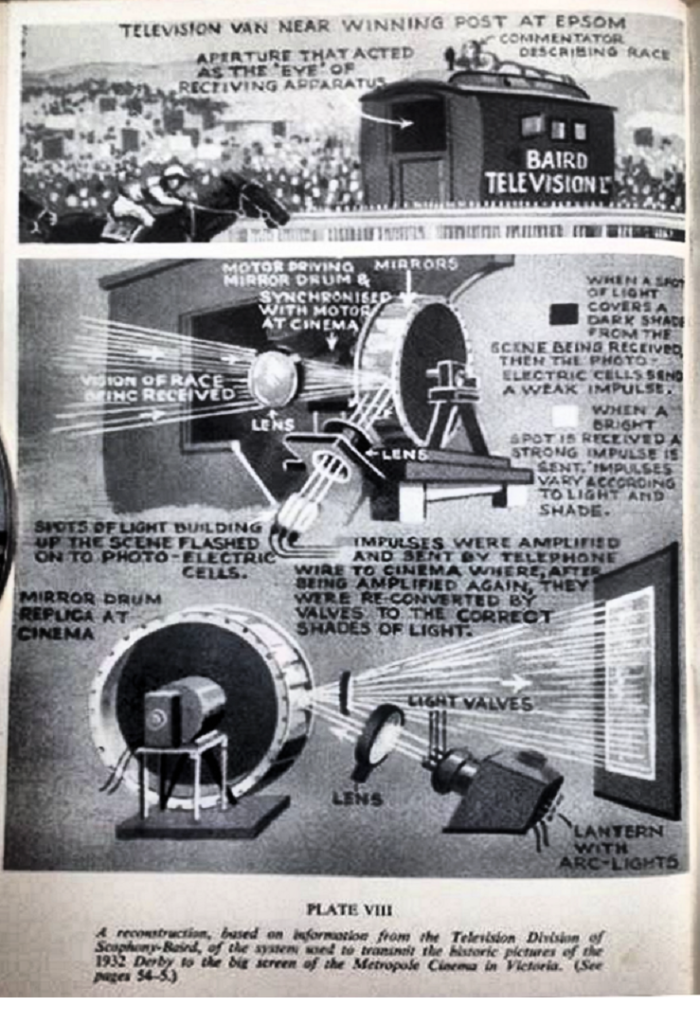
Neil Dormand
I favour the following as the origin of the use of scanner.The first TV OB was of the Derby in 1931, this is was undertaken by Baird before the BBC got involved. This information I got from Edward Pawley’s book “BBC Engineering 1922-1972”.
“…Viewers saw about ten seconds of the just recognisable horses flashing past the winning post. This was done with a mirror-drum scanner set up in a van near the winning post and the signals were put on a line and sent to Long Acre…”
Long Acre was the location of Baird’s workshop.For any one that is interested there is a lot of information about how the mirror-drum was used on line particularly in the receiver. The BBC purchased a set-up from Baird in 1933 which was installed in BH. I am surprised it even sort of worked in the open air.
Alan Taylor
I can offer documentary proof that the term “scanner van” was in use in 1939.BBC Handbook 1939:
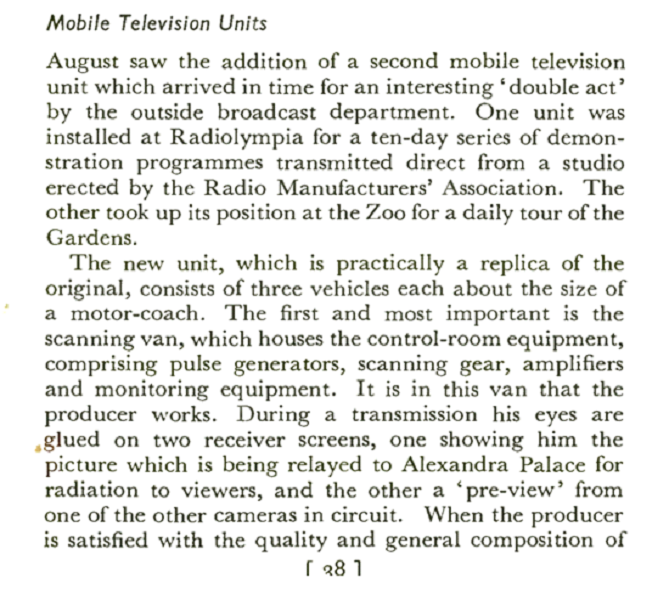
It says “ the first and most important of them is the scanning van …. “.
The article is referring to the second BBC truck of that type. Unfortunately I still can’t find the picture I’ve previously seen, but am satisfied that this is similar to the description I previously mentioned in this thread.



